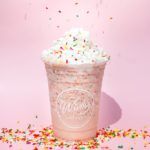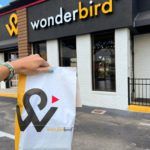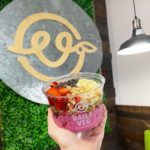Running a restaurant can be a wild ride – particularly in the current economy. There are many things that can cause a restaurant’s profitability to take a nose-dive, from a shut down order, to seating capacity limits, to rising labor costs, and out-of-control inflation. One way that restaurant owners can maintain some control is by closely analyzing and tracking their prime costs.
Put simply, prime cost is what you spend in order to make sales. By adding together the cost of your ingredients and labor expenses, you can arrive at a prime cost number. This figure can then be used to make decisions about menu prices, vendors, and more.
At Budget Branders, we know that running a restaurant involves a lot more than having a great concept or making fantastic food. We strive to help our clients succeed by offering the highest quality disposable products at the best prices. If you’re interested in custom branded products for your restaurant, reach out today to learn more about how we can help.
What Is Prime Cost?
When you’re trying to run a restaurant, there are a lot of different factors that must be considered when it comes to staying profitable. Perhaps the single most important performance indicator is your prime cost.
Prime cost is what you spend in order to sell a product or service. Also referred to as direct cost, it is the sum of your labor expenses and cost of goods sold (CoGs). To find your prime cost, you simply add up CoGs and total labor costs.
In other words, prime cost is what you must spend in order to sell your product. To break it down further, think about prime cost as the percentage of each dollar that must be allocated to staffing and inventory. The lower your prime cost, the higher your profit margin will be.
For restaurants, prime cost is a key metric because it informs almost every other aspect of your business, from setting menu prices to determining how much money you can spend without compromising your bottom line to hiring decisions. Prime costs tend to make up the largest running expense for a restaurant – and without these expenditures, you wouldn’t be able to run your restaurant.
Prime costs are also dynamic in nature. As we have all learned over the past two years of the COVID-19 pandemic and resulting supply chain and inflation issues, the cost of both goods and labor can change dramatically. Monitoring your prime cost is absolutely crucial to the overall success of your restaurant, as it will allow you to adjust in real time to changing situations.
For example, if you notice that the cost of a staple ingredient, such as olive oil, has risen dramatically, then you can make changes to your menu accordingly. This may involve raising menu prices to incorporate the higher prices, or switching to a lower cost oil. You may even switch to another supplier with lower prices on olive oils and other inventory.
This highlights another reason why staying on top of prime costs is so important: because to some extent, you can control them. While you may not be able to control things like the cost of your commercial insurance premiums, you can and should make changes to your prime costs as necessary.
In this way, prime cost is different from overhead expenses. Overhead or conversion costs include all of the expenses that go into running a business for things that aren’t directly linked to a product sold to a customer. Examples of overhead costs include rent, maintenance, kitchen equipment, furniture, and utilities. These types of expenses tend to be fixed, and cannot be manipulated in the same way that prime costs can be.
With your prime cost in mind, you will be better able to make smart decisions when it comes to:
- Hiring
- Scheduling staff
- Setting menu prices
- Ordering inventory
- Choosing vendors
- Budgeting
- Establishing sales goals
- Spending on indirect needs
- Creating promotions and specials
Ultimately, understanding your prime costs will empower you to get a better idea of your profit margin. By closely tracking your prime costs, you will also be able to see where you might be able to cut expenses or reduce waste – which will increase your profitability.
How Can I Calculate My Restaurant’s Prime Cost?
Prime cost will be needed to generate a restaurant P&L statement, which is something every restaurant owner should regularly analyze. Accounting software can calculate your prime cost for you, but it’s still worth knowing how to calculate prime cost yourself.
The formula to determine prime cost is deceptively simple: CoGS + Labor Cost = Prime Cost. In order to make this calculation, you will first need to do some work to determine your CoGS and labor cost.
Cost of goods sold, or CoGS, is what you pay for the raw materials to make your menu items. It represents the actual amount of food, beverage, and other ingredients that you use to produce your sales. The formula for CoGS is as follows:
Beginning inventory of food and beverage + purchases – ending inventory = CoGs
This formula requires you to look at a particular time period, such as a week. If you are regularly tracking inventory (something that you should be doing!), you may know that at the start of the week, you have $10,000 worth of food and beverage on hand. During the week, you receive $2,500 in new inventory orders – for a total of $12,500 of inventory on hand. When you do your inventory at the end of the week, you find that you have $8,000 of inventory. The CoGS for this week is $4,500 ($12,500 – $8,000). In other words, you spent $4,500 on food and beverage during the week.
Next, you will need to calculate your labor costs. To start, you will need to divide your staff based on whether they are salaried or hourly employees. For salaried employees, you can divide their annual salary by 52 to arrive at their cost for one week of work. For hourly employees, you will need to add up the hours worked by your staff for that time period, and multiply that number by the hourly wage that you pay.
Of course, the cost of having employees includes more than just wages – it also includes payroll tax, benefits, health insurance, retirement contributions, and workers’ compensation insurance. Your accountant can give you an idea of how much these costs are for a given period of time.
Assuming that your labor costs for a one week period are $3,500, your prime cost is $8,000. This number was determined by adding our hypothetical CoGS ($4,500) and our labor costs ($3,500).
Once you have a prime cost, you can then determine your prime cost percentage by dividing your prime cost by total sales, and then multiplying that number by 100. For example, if you had $14,500 in sales during the same week, then your prime cost is $8,000/$14,500 x 100, or approximately 55%. This tells you that for every dollar in sales that you bring in, 55% of that dollar is going towards your prime costs.
While there is no magic number for what a restaurant’s prime costs should be, most full-service restaurants aim to keep it below 60%. If it’s much higher than 60%, it is difficult to remain profitable. However, if your prime cost is below 50%, then it may be a sign that you’re sacrificing quality or service, or that you’re overcharging customers. While this may make your restaurant profitable in the short-term, it probably isn’t sustainable.
If all of this math turns you off, have no fear: there are plenty of restaurant software programs that can help you make these calculations. Many point of sale systems will determine labor costs for you, and accounting software can analyze prime cost and prime cost percentage on a regular basis for you. By reviewing these numbers regularly, you can get a better idea of how your business is doing – and where you might need to make some changes.
How Budget Branders Can Help
There is a lot that goes into running a successful restaurant. One way that you can stay profitable is by keeping a close eye on your prime costs. These direct costs are a good indicator of the overall health of your business, and can be used as a starting point for other decisions.
Of course, reducing your costs doesn’t have to mean that you skimp on quality. At Budget Branders, we offer premium disposable products at fair prices. All of our products, including disposable cups, coffee sleeves, take-out bags and bowls, can be customized with your logo and/or slogan to help increase your sales and branding efforts.
To learn more or to get a quote on our products, fill out our online contact form, or hit the “live chat” button.




















